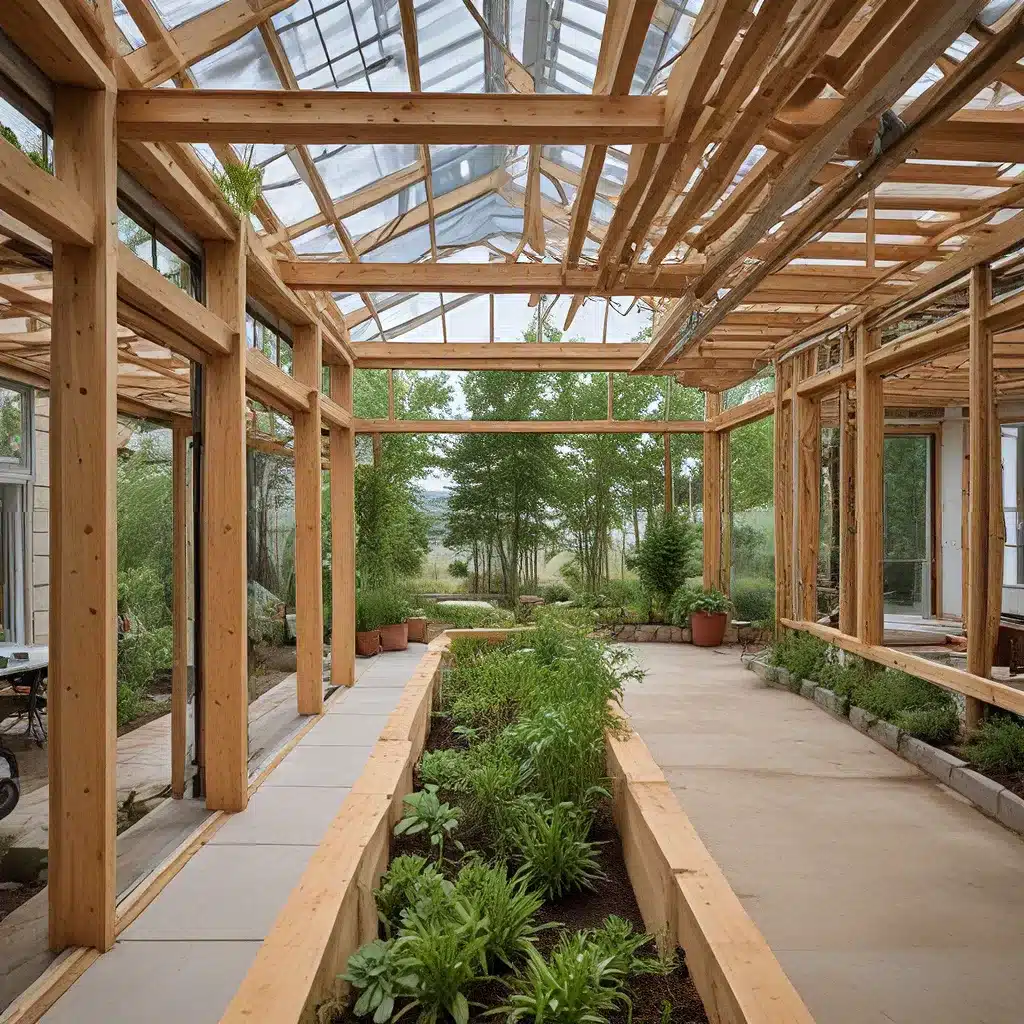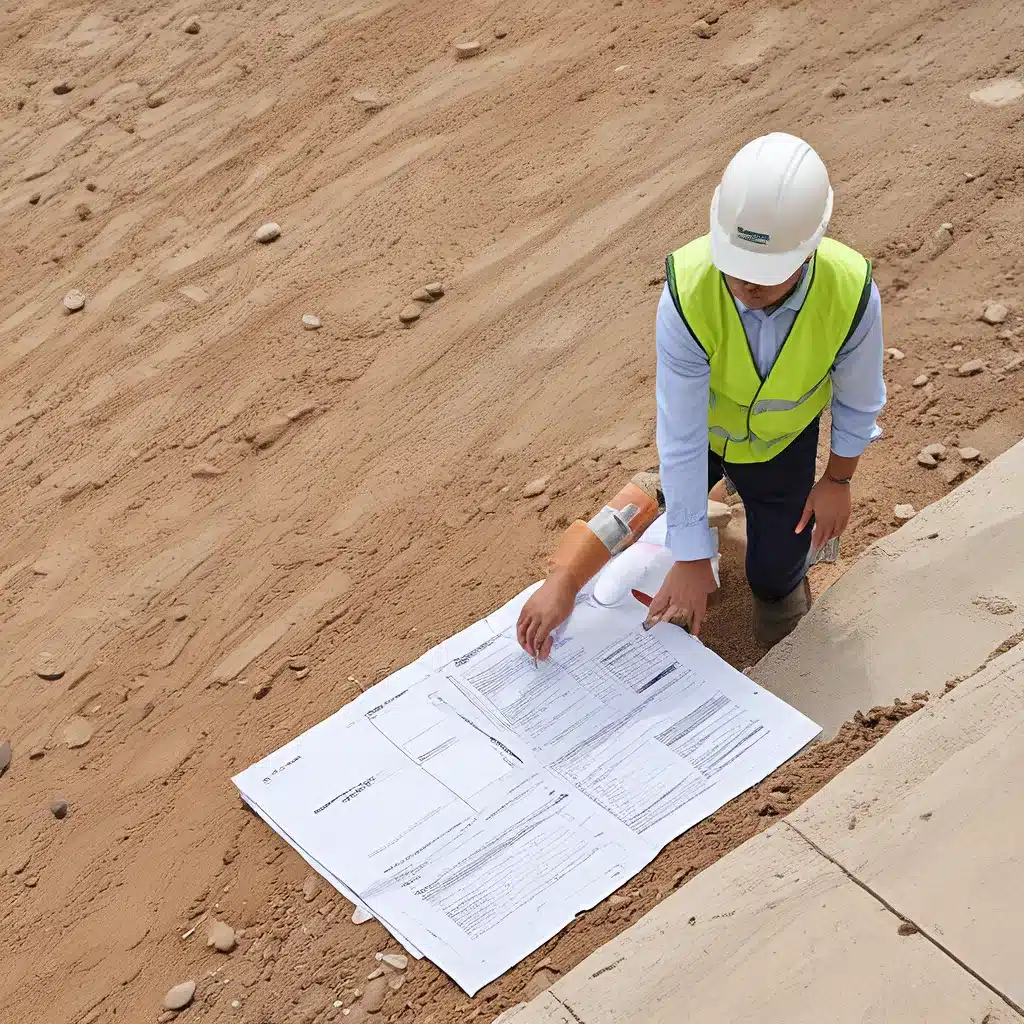
Buckle up, folks, because we’re about to embark on a journey towards a greener, healthier, and more sustainable future – one office space at a time! As a general contractor and construction services provider, I’m here to spill the beans on how you can transform your bland, energy-guzzling workplaces into oases of eco-consciousness.
The Unsustainable Office Conundrum
Let’s face it, the current state of many office environments is, well, downright dismal. These spaces are often characterized by energy-intensive buildings, excessive use of non-renewable resources, and inadequate waste management practices. The result? A towering carbon footprint that’s accelerating climate change and posing serious health risks to the poor souls who have to toil away in these conditions.
Imagine stepping into an office where the air is thick with pollutants, the lighting is harsh and unnatural, and the furniture is made of toxic materials. Not exactly the recipe for employee well-being, is it? And let’s not forget the financial implications – these unsustainable practices are draining resources and eating away at the bottom line.
The Case for Going Green
But fear not, my friends! There’s a solution to this eco-nightmare, and it comes in the form of sustainable office design and practices. By prioritizing energy efficiency, eco-friendly materials, and employee well-being, you can create work environments that are not only good for the planet but also good for business.
As the experts at YAROOMS point out, sustainable offices can lead to substantial cost savings through reduced energy consumption and waste. Plus, these spaces can improve indoor air quality, boost cognitive performance, and enhance overall employee satisfaction – a win-win for both the environment and your bottom line.
And let’s not forget the power of corporate social responsibility (CSR) and brand reputation. When you commit to eco-friendly practices, you’re not only doing your part for the planet but also showcasing your dedication to environmental stewardship and social responsibility. This resonates positively with stakeholders, attracting environmentally conscious consumers and positioning your organization as a socially responsible player in the industry.
The Essential Elements of a Sustainable Office
Alright, let’s dive into the nitty-gritty of crafting an eco-friendly workspace. Here are the key elements you need to consider:
Energy-Efficient Lighting and Equipment
One of the cornerstones of a sustainable office is implementing energy-efficient lighting and equipment. This means saying goodbye to energy-guzzling incandescent bulbs and hello to LED lighting, occupancy sensors, and Energy Star-rated office equipment. Not only does this significantly reduce energy consumption, but it also leads to lower utility costs – a win-win for both the environment and your bottom line.
Waste Reduction and Recycling
Another crucial aspect of a sustainable office is minimizing waste generation and maximizing recycling initiatives. Encourage your employees to use digital collaboration tools instead of paper, and provide designated bins for recyclable materials like paper, plastic, and glass. This not only reduces the burden on natural resources but also promotes the principles of a circular economy.
Biophilic Design
Incorporating nature into your workspace design, known as biophilic design, is a surefire way to create a healthier and more sustainable office. Abundant scientific evidence shows that indoor plants can clean the air, boost oxygen levels, and improve overall employee productivity and satisfaction. Opt for natural materials like wood, bamboo, or cork, and let the warm, earthy tones add a touch of eco-chic to your space.
Eco-Friendly Furniture and Materials
When it comes to creating a sustainable office, your choice of furniture and materials is crucial. Look for furnishings made from renewable or recycled materials, such as bamboo or reclaimed wood, and opt for non-toxic, low-emission materials in construction and finishes. Not only does this reduce the environmental impact, but it also contributes to better indoor air quality and aligns with your corporate responsibility goals.
Designing the Sustainable Office
Transforming your workspace into a sustainable oasis is no easy feat, but with the right strategies and a little elbow grease, you can make it happen. Let’s dive into the step-by-step process:
Assess and Identify
Start by conducting an objective assessment of your current office practices. Where are you potentially wasting resources like energy, materials, or water? Is there room for improvement in your recycling processes? Identifying these areas of improvement is the foundation of your sustainable office plan.
Incorporate Sustainable Design Principles
Incorporate sustainable design principles into your workspace layout and interior design. This could include using eco-friendly furniture, opting for water-based paints with lower volatile organic compounds (VOCs), or choosing carpets made from natural fibers over synthetic alternatives. Remember, every small effort counts when it comes to sustainability!
Maximize Natural Light and Ventilation
Harnessing natural light and ensuring adequate ventilation are crucial components of a sustainable office design. Enlarging windows or redesigning workspaces closer to natural light sources can not only reduce your reliance on artificial lighting but also boost employee productivity and mood.
Embrace Flexible Workspaces
Flexible workspaces are the name of the game in modern sustainable offices. Their adaptability allows you to use your premises efficiently, minimizing the waste of resources associated with under-utilized areas. Think movable partitions, desk-sharing systems, and open collaborative spaces that strike the right balance between openness and privacy.
Fostering a Sustainable Mindset
Crafting a sustainable office space is about more than just aesthetics – it’s about fostering an eco-friendly mindset among your employees. Here’s how you can make it happen:
Establish Sustainable Policies and Practices
Start by influencing the everyday behaviors of your employees. Encourage a paperless work environment, remind them to turn off lights when leaving a room, and unplug equipment at the end of the day. These seemingly small acts can make a big difference in reducing energy consumption and waste generation.
Promote Alternative Commuting Options
A substantial portion of a company’s carbon footprint comes from employee commuting. Promote alternative transportation options like biking, carpooling, or public transit to help reduce greenhouse gas emissions. Provide incentives and make it easy for your team to embrace these eco-friendly commuting habits.
Educate and Empower
Providing regular training sessions on the importance of sustainable office spaces is crucial. Ensure your employees understand the impact of their current habits on the environment and their health, and encourage them to share innovative green office ideas. An educated and engaged workforce is instrumental in transitioning towards a truly sustainable workspace.
Measuring and Improving
Ensuring your office operates sustainably is an ongoing process that requires continuous measurement and refinement. Keep a close eye on your energy consumption, water usage, and waste generation, and use this data to track your progress and identify areas for improvement.
As Digi.com points out, digital monitoring solutions can help you easily track your Scope 2 and Scope 3 CO2 emissions, estimate future resource use, and visualize your carbon footprint. This valuable insight will guide you in updating existing policies, implementing innovative sustainable ideas, and investing in new eco-friendly equipment as required.
Remember, the journey towards sustainability is not a one-time endeavor. It’s a continuous process of evaluation, adaptation, and improvement. Stay committed, stay informed, and never stop striving to make your office space a shining example of environmental responsibility and social consciousness.
Overcoming the Challenges
Of course, the path to a sustainable office space is not without its challenges. From budget constraints to employee resistance, there are plenty of obstacles to overcome. But where there’s a will, there’s a way – and trust me, the rewards are well worth the effort.
Cost Implications: Modifying existing infrastructure or constructing a new sustainable office building can come with substantial upfront costs. Eco-friendly materials and equipment often come with higher price tags, but the long-term savings in utility bills and improved employee health and productivity make it a worthwhile investment.
Resistance to Change: Humans are creatures of habit, and sudden changes in workplace practices can lead to employee discomfort. Educating your staff on the benefits of sustainability and involving them in the process can help smooth this adjustment phase.
Regulatory Hurdles: Securing necessary building permissions for substantial modifications can be a complex and time-consuming process, depending on your region’s regulations and attitudes towards sustainable infrastructure. Seeking expert guidance early on can help you navigate these bureaucratic waters.
But remember, the rewards of a sustainable office space far outweigh the challenges. By committing to this journey, you’re not only doing your part for the environment but also positioning your organization as a leader in the sustainable business movement. So, let’s roll up our sleeves and get to work, folks – the future of our planet and our workplaces depends on it!
Trends and the Future of Sustainable Offices
As we look towards the future, there are several emerging trends in sustainable office spaces that are worth keeping an eye on. From smart building technologies and circular economy principles to wellness-focused designs and cutting-edge VR/AR tools, the landscape of eco-friendly workspaces is constantly evolving.
At Reading General Contractor, we’re excited to be at the forefront of this sustainability revolution, helping our clients craft spaces that not only minimize their environmental impact but also enhance the well-being and productivity of their employees. So, what are you waiting for? Let’s get started on your journey towards a greener, healthier, and more sustainable office space!
Related posts:
No related posts.




